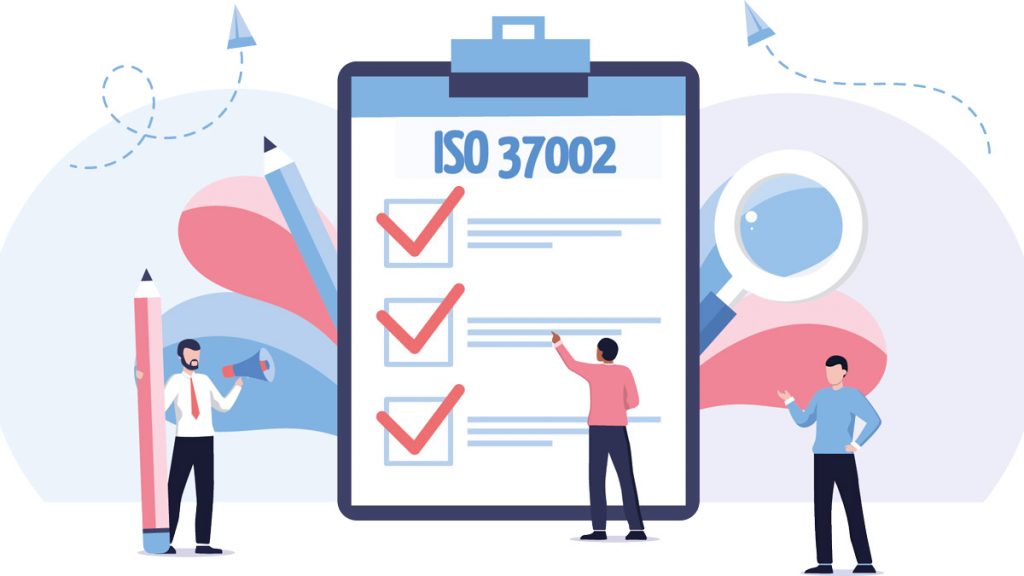What is the BRC Global Standard for Food Safety?
In February 2018, the latest version (BRC v8), came into effect, facing manufacturers and suppliers globally with new requirements. New is a ‘tone from the top’ approach to food safety culture and ‘bottom up’ reporting system to allow employees to report food safety concerns. This call for reporting systems by the BRC follows new legislative requirements for reporting system across Europe and complements large supermarket retailer requirements for their suppliers to have reporting systems in place.
Specifications of the BRC standard with regard to whistleblowing systems
Companies that are active in the production, processing and packaging of foodstuffs are obliged to do the following in accordance with paragraph 1.1.6:
“The company shall have a confidential reporting system to enable staff to report concerns relating to product safety, integrity, quality and legality.”
A ‘confidential reporting system’, more commonly known as a whistleblowing system, allows employees to raise concerns through one or more reporting channels. Typically, his could be via email, phone or specific web-based portals.
Steps to comply with BRC v8 1.1.6:
1. Involve other stakeholders
Before implementing a reporting system, you must understand what policies and arrangements are currently in place. Speak to HR, Compliance and Legal. They are key stakeholders when implementing the system and you need to get their early buy-in. Understand their requirements prior to implementing a reporting system purely for food safety concerns.
2. Define your requirements
When designing your reporting system, you need to consider the following:
- Who is using the system? (Employees, suppliers, other third parties)
- Which channels (email, phone, web) are most suitable for your target group? What are advantages and disadvantages of each channel?
- How will you maintain confidentiality?
- Is there a need for anonymous reporting? (This may be an expectation of your auditor)
- Do you need two-way communication with reporters in case of clarification?
- What languages should be offered?
- How will you assess and document concerns?
- To whom and how do you need to report?
- How will you measure success?
3. Select a reporting system
Based on your requirements, you have to select a reporting system. The most important task is the decision which kind of reporting channels you want to provide. The most common reporting channels are email, phone and digital systems, that are web-based. Digital systems are often connected to case management systems to manage and document investigation into the concerns raised.
Whether opting for email, phone or digital system, ensure the solution is compliant, secure, accessible, scalable and adaptable:
- Compliant – Any reporting system must comply with data protection and employment laws in all jurisdictions.
- Secure – If you choose to implement an externally hosted system, consider the IT security requirements internally and engage IT early in the design process to ensure they are happy with the system.
- Accessible – Ensure you offer a mixture of reporting channels. Consider the work environment, culture and demographics of your employee base.
- Scalable – Ensure your arrangements are future-proof. Will your system be fit-for-purpose if the number of employees’ doubles? If you enter new markets/jurisdictions? If the regulatory landscape shifts?
- Adaptable – Post launch, you will inevitably receive feedback on the reporting system and identify areas of improvement. Is the system able to adapt and change as your whistleblowing processes mature?
4. Implement and communicate the reporting system
Implementation time for a reporting system can vary from a few hours to a few months based on the complexity of the project.
Communication of the new system is a key success factor of an effective reporting system. Ensure that senior leaders are involved in the communication. “Tone from the top” is essential to the success and use of the reporting channel. Employees need to understand how important raising food safety concerns is to the organisation, feel confident that their concern will be taken seriously and be assured there will not be retaliated against.
The new BRC standard also places an emphasis on this by requiring companies to evidence how the reporting system is communicated to all employees. Use inventive means of communication and communicate the system to employees frequently to get the best results.
BRC v8 sets a new standard for food safety. Reporting measures are an important step to this effect. With the right strategy, companies succeed in complying with requirements but also improving speak-up culture.









